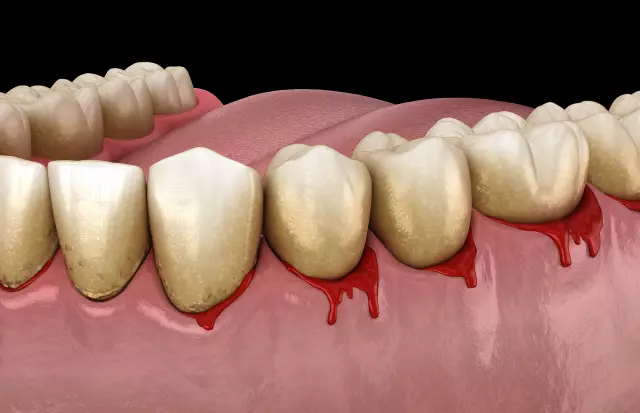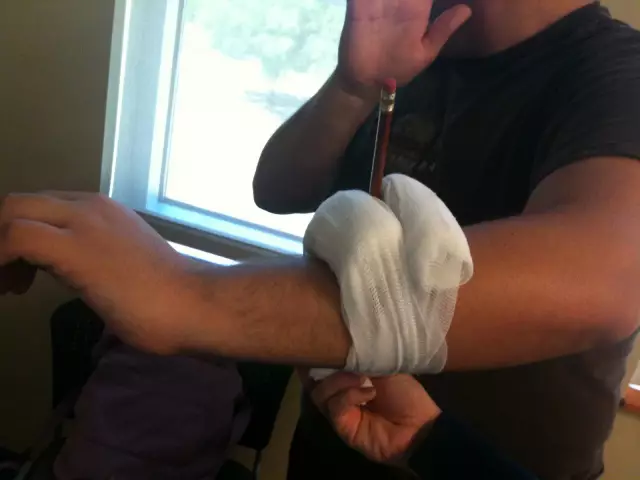- Author Rachel Wainwright [email protected].
- Public 2023-12-15 07:39.
- Last modified 2025-11-02 20:14.
Dysfunctional uterine bleeding

Dysfunctional uterine bleeding is a pathological phenomenon that is accompanied by bleeding from the uterus in women. This bleeding can be caused by hormonal disorders, menopause, trauma and diseases of the genital organs.
Causes and symptoms of dysfunctional uterine bleeding
Dysfunctional uterine bleeding is a manifestation of disorders in the functioning of the ovaries. These bleeding are characterized by acyclicity, the presence of irregular menstrual cycles with alternating long periods of bleeding from 10 days to 2 months.
Dysfunctional uterine bleeding is of several types - juvenile at the age of 13-17, reproductive at the age of 18-45, and menopause at the age of 50. At each of these stages, the main cause of bleeding is hormonal imbalance.
Dysfunctional bleeding in the juvenile period is associated with the formation of the reproductive system and is caused by a number of disorders in the functioning of the genital organs.
During the reproductive period, uterine bleeding manifests itself in menstrual irregularities and increased blood loss. Also, the causes of violations can be inflammatory processes, diseases of the endocrine system, abortion, stress, etc.
Dysfunctional uterine bleeding of the climacteric period is directly related to the extinction of sexual and hormonal functions. These bleeding are characterized by prolonged periods of bleeding and symptoms of anemia, such as dizziness and headache, pallor of the skin, increased fatigue, drowsiness, and low blood pressure.
The appearance of this bleeding can be facilitated by physical disorders, psychological trauma, overwork, vitamin deficiency, adrenal dysfunction, as well as unfavorable working and living conditions.
Dysfunctional uterine bleeding of the climacteric period may be associated with the use of drugs intended to relieve the symptoms of menopause. In such cases, the attending physician should review therapy and prescribe other climacteric drugs.
Diagnosis of the disease
Dysfunctional uterine bleeding is diagnosed according to the age and physical condition of the patient. First of all, you need constant control over the menstrual cycle, keeping a diary with a chronology of the frequency of bleeding and their intensity, as well as monthly measurement of basal temperature to establish ovulation.
For an accurate diagnosis, the attending physician prescribes a complete gynecological examination, as well as a blood test, endometrial biopsy, ultrasound, sonohysterogram and hysteroscopy.

Nulliparous women over 35 years of age are prescribed a biopsy of the lining of the uterus to rule out the presence of endometrial cancer.
Treatment of dysfunctional uterine bleeding
Treatment for dysfunctional uterine bleeding depends on the age of the woman. If the mucous membrane of the uterus has thickening, then it is necessary to identify the presence of abnormal cells and perform surgical removal of neoplasms or the entire uterus.
For women under 35 who are planning a pregnancy, oral contraceptives containing estrogen or estrogen medications are prescribed to reduce bleeding. At the beginning of the course of treatment, the dosage is high, but after 2-3 months of taking the drugs, the dosage is reduced.
The most effective treatment for dysfunctional uterine bleeding is when the following groups of drugs are prescribed:
- hemostatic;
- normalizing hormonal levels;
- eliminating the symptoms of anemia.
Among the surgical methods of treatment are laser effects on the uterine mucosa, curettage of the uterine cavity, as well as hysterectomy in severe conditions and lack of results from other methods of treatment.
YouTube video related to the article:
The information is generalized and provided for informational purposes only. At the first sign of illness, see your doctor. Self-medication is hazardous to health!






